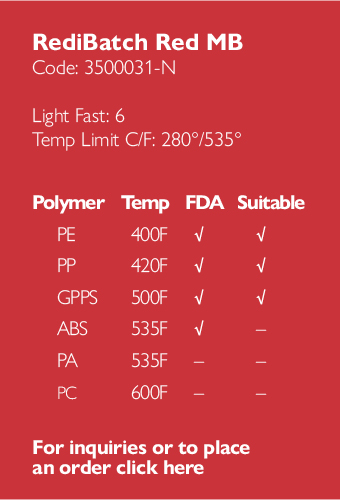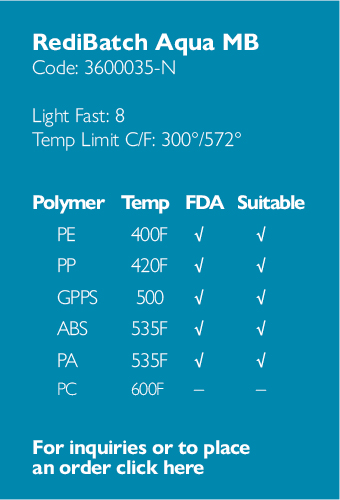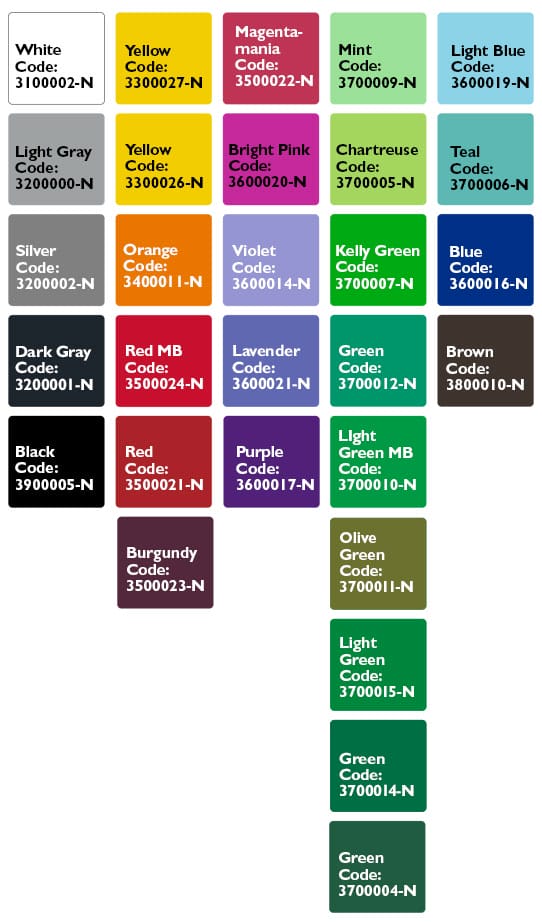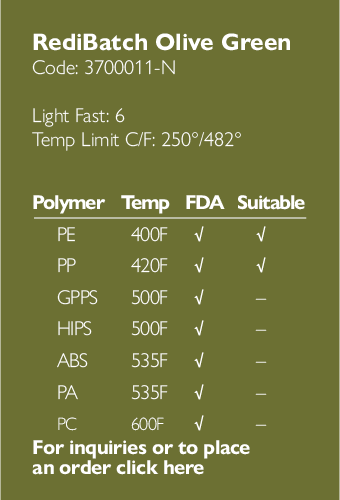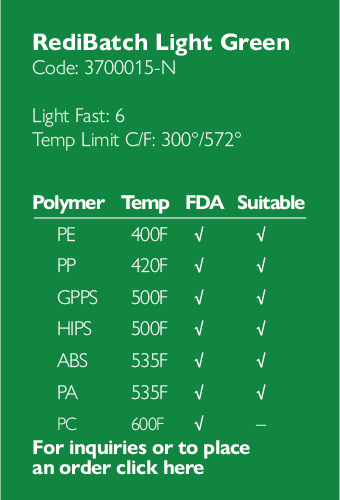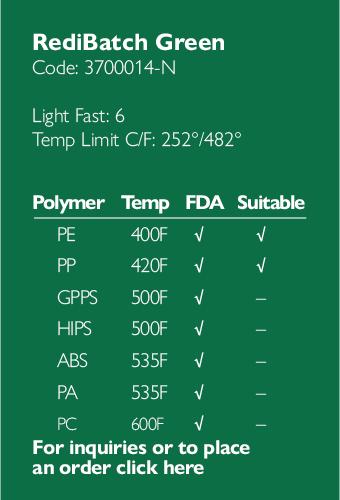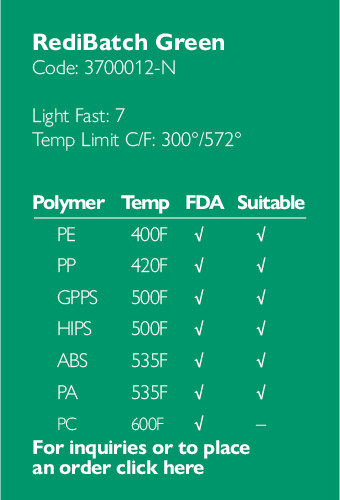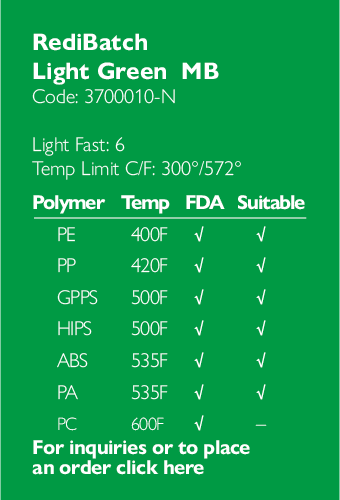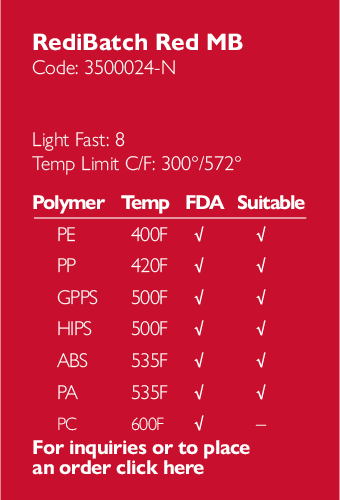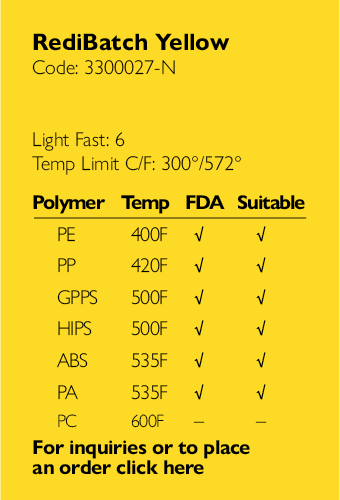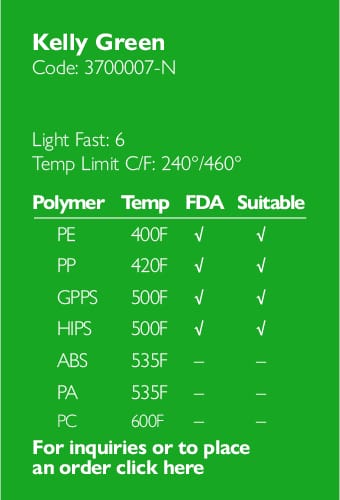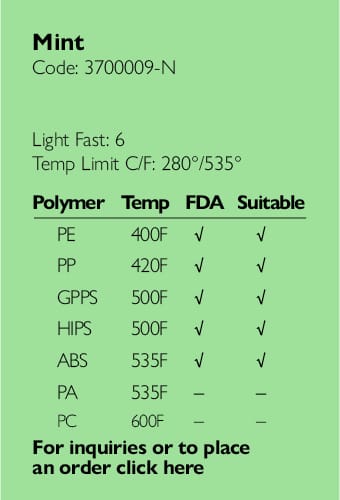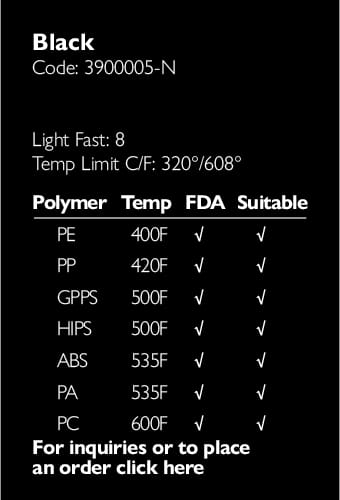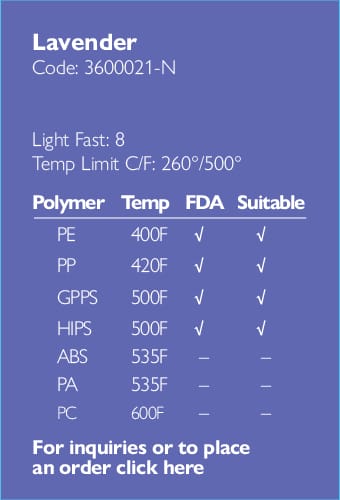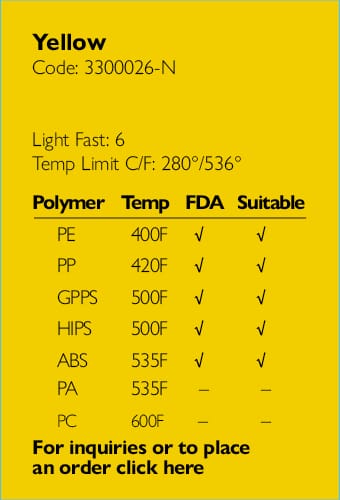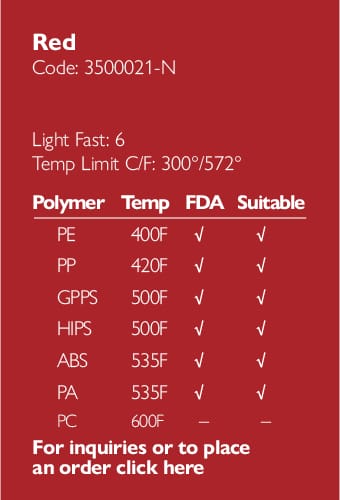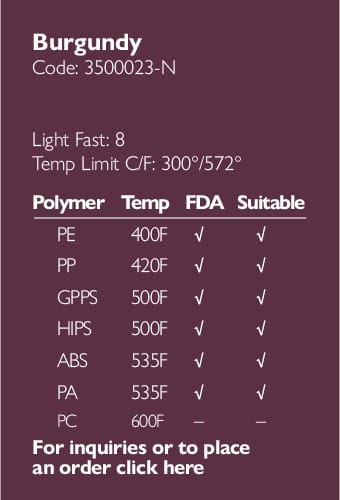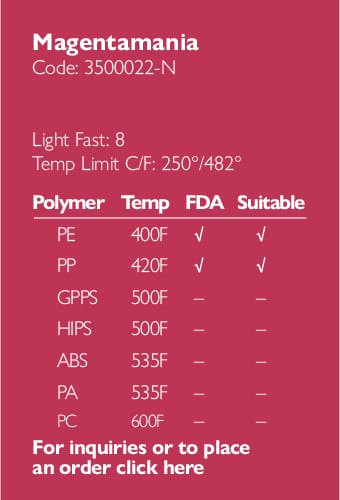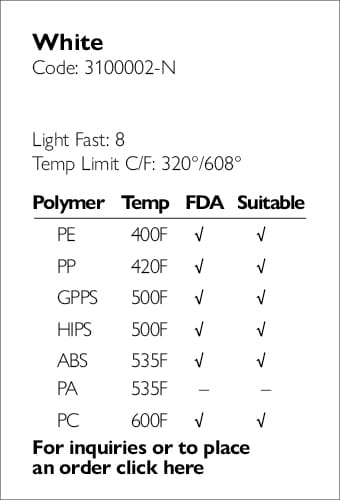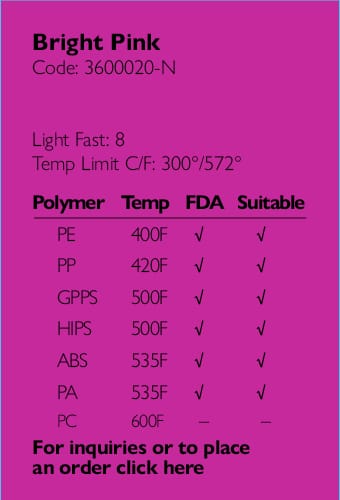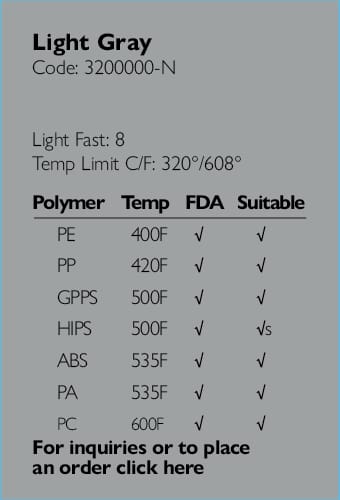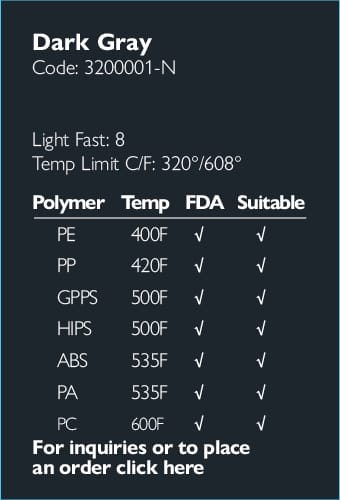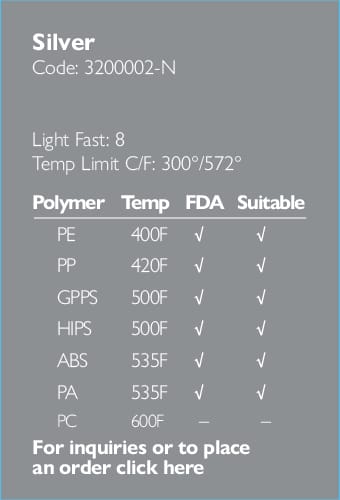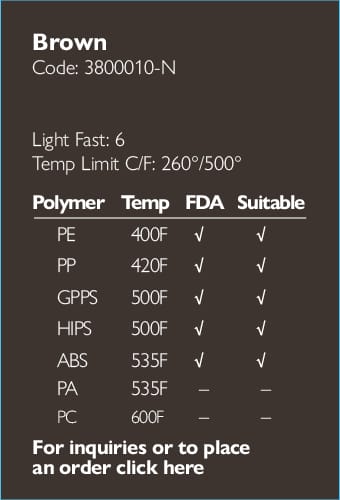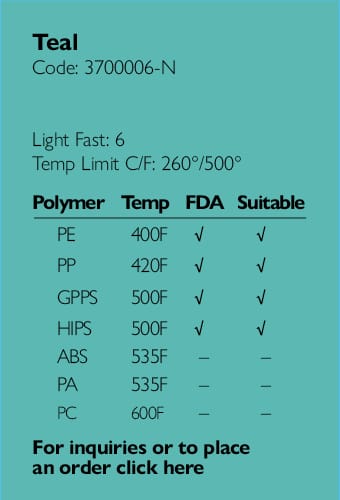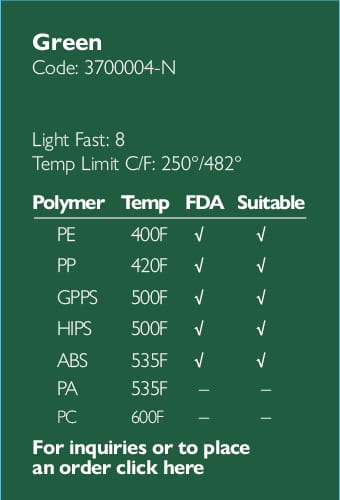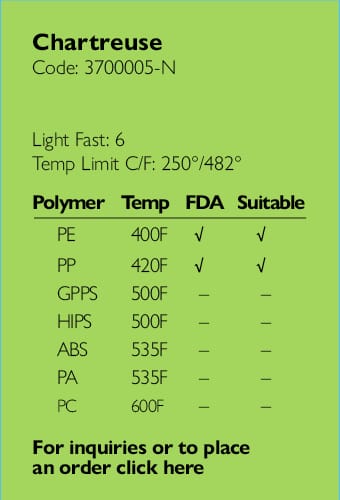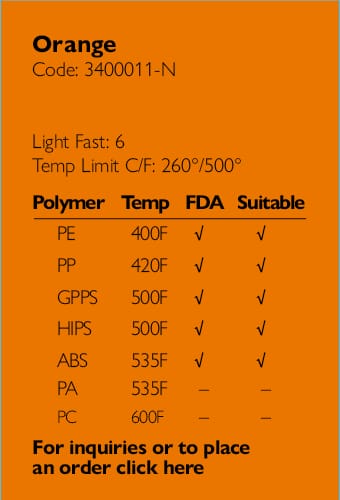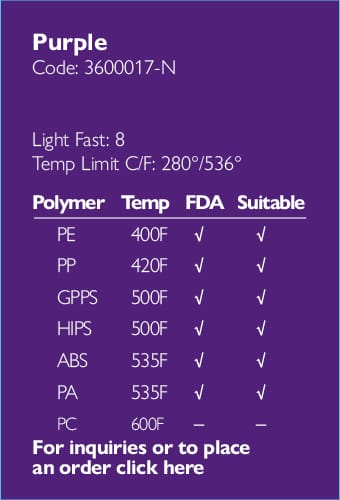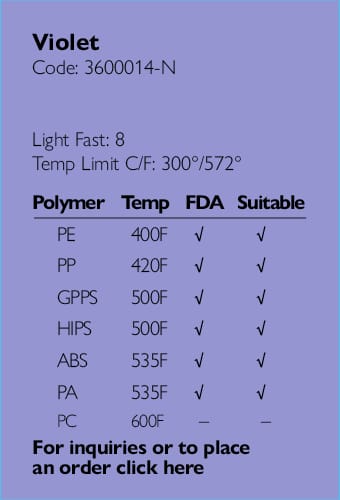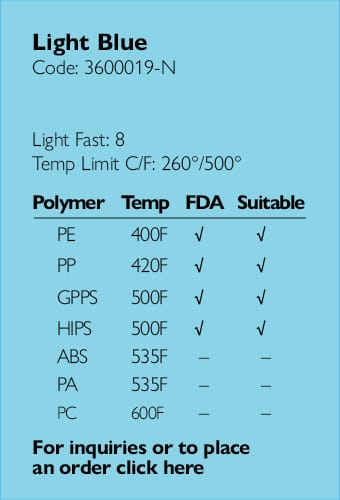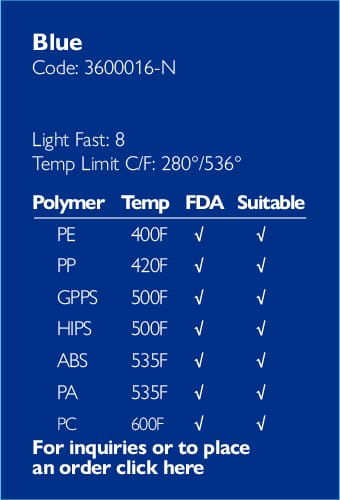Material Guidelines For Developing Quality Polyolefin Pipe
by Joseph A. Serbaroli, Jr. ~ Ampacet Corporation ~ Tarrytown, N.Y.
Plastic pipe extrusion accounts for the largest volume of plastic used in the building and construction industry; and polyolefin plastic pipe is one of the two dominant types manufactured and installed today. Most polyolefin pipe in North America is made of a so-called “salt & pepper” blend, which is highly concentrated carbon black masterbatch that is let down into natural HDPE (high density polyethylene) resins. As opposed to other types of extrusions such as molded plastics, the production of pipe is a “profile extrusion” method. During the process, the objective is to make the structure of the wall as solid and unyielding as possible, while maintaining a certain degree of flexibility when coiled in a continuous length, sometimes 4,000 feet or more on a single reel. In order to do this, the selection of proper materials is critical, and special guidelines generally apply.
In the world of plastic pipe, all types can be divided into two categories. There is the general purpose, non-pressure kind which includes conduit and corrugated drainage pipe. The other is pressure-rated pipe used primarily for the transport of water and fuel gas. Pressure-rated pipe is held to higher performance criteria, because it is expected to hold varying levels of internal pressure at specified temperatures over long periods of time. Most of the standards governing the manufacturing and use of polyolefin pipe and pipe fittings in North America are set through the Plastics Pipe Institute (PPI), Canadian Standards Association (CSA), National Sanitation Foundation (NSF), American Water Works Association (AWWA), American Gas Association (AGA), American National Standards Institute (ANSI), and the American Society for Testing and Materials (ASTM). The following text will address the aspects of proper material selection for high performance pipe.
Formulating the Right Mix of Elements for Pressure Applications
Essentially, there are two kinds of pipe failures. There are field failures attributable to a pipe’s underground installation, e.g. improper backfill, rock impingement or an excessively tight bend radius. Then there are structural failures, which this paper addresses, that are caused either by poor extrusion (processing) or by the use of either unsuitable resins or masterbatch.
The most structurally sound polyolefin pipe wall is made with fractional melt or low melt virgin polyolefin resins only. Anything that is added to the natural base resin has the potential to compromise the integrity of a pipe wall’s structure. At the same time, adding a black masterbatch can enhance the mechanical properties of pipe by making it more flexible, and by providing important UV and thermal protection to extend the service life of pipe. Critical to the manufacturing of pressure pipe are these four elements:
- The let down resin, which often contains some additives
- The carrier resin in the masterbatch (usually LDPE, MLDPE, or LLD).
- The type of pigment in the masterbatch
- The dispersion of the ingredients, e.g. pigments, anti-oxidants, UV inhibitors, etc. in the masterbatch.
The two main components of the pipe compound and the ingredients in each.

One way to explore the role that each component plays is to illustrate a few of the problems that can occur.
Four Common Problems Associated with Structural Plastic Pipe Failures
Although rare, the origins of crack initiation are sometimes traceable to: 1) undispersed particle agglomerates in the wall, 2) inclusions of foreign materials, 3) voids or “windows” in the wall, 4) hachures, which are lines that show potential areas of fracture. From a materials perspective, these are generally attributable to four common problems.
1) Inferior materials: one of the potential causes of failures in plastics is the use of inferior materials. Contrary to what some pipe manufacturers believe, not all masterbatches are created equal. To make general purpose, carbon black concentrates for non-pressure pipe such as conduit or drain pipe, some masterbatch producers use off-grade resins, pigments, additives and reground plastics. When formulating masterbatches for high performance pipe and pipe fittings, however, only high quality, virgin materials should be used.
2) Incompatible melt viscosities: selecting the right carrier resin for a pressure pipe masterbatch is of paramount importance. The basic premise is that, with a standard loading of 35% carbon black, the pellets should have a comparable melt viscosity with the companion HDPE base resin. If the melt viscosity of the masterbatch is much higher than the base resin, then the pipe maker will not be able to adequately incorporate the masterbatch into the matrix. Conversely, if the melt viscosity of the masterbatch is appreciably lower versus the HDPE, amorphous zones or small pockets of soft polyethylene without crystalline structure can form.
Ampacet Corporation uses various carrier resins for pressure pipe masterbatches, depending on the carbon black loadings and the HDPE for which it is designed. We favor MLDPE or LLDPE with melt indices below 20 MI in order for our customers to achieve the optimal homogeneity of the masterbatch into the HDPE resin.
3) Poor dispersion: for masterbatch formulators, besides the proper selection of materials, nothing is more critical than achieving the finest dispersion of the additives in the carrier resin. The reason is that miniscule agglomerates of black pigment or additives in the pipe wall can act like grains of sand and cause what is commonly referred to as a “brittle failure” or Stage Two mechanical failure in which a tiny hole forms in the wall. As the pressurized stream of water spurts through the pipe wall, the opening will become larger until the pipe loses pressure completely.
This is more commonly experienced in thin walled pipe, because the thinner the wall is, the greater the chance that these agglomerates will negatively impact its ability to hold pressure. In large diameter pipes that have much thicker walls, the agglomerates or poorly dispersed carbon black can cause voids or “windows” to form. The formation of windows is almost impossible to circumvent, but they must be minimized in both size and number in order to reduce the chance of a pipe failure.
Numerous studies have confirmed that the quality of dispersion in plastics is critical both to UV performance and the mechanical properties of plastics. To measure the quality of dispersion in the masterbatch pellets, Ampacet uses a micro dispersion scale of 1 – 5 in which 1 equals the highest quality dispersion and 5 equals the lowest. This is done by converting the masterbatch into a thin polyethylene film of about 1.5 mils (.0015 thousandths of an inch) and then measuring the agglomerates present in the film via a visual inspection. This gives the masterbatch producer a certain degree of confidence that the carbon black is dispersed well-enough for the customer to make a pipe wall which is smooth and solid. Moreover, it provides a company with a traceable lot number in the event that a pipe might fail in the field. The dispersion rating is reported on the certificate of analysis for each and every lot produced. For critical applications such as pressure pipe or geomembranes, masterbatch manufacturers should keep records of each lot and, should the need arise, make that technical data available to the purchaser or to an independent third party.
 Left: Finely dispersed particles of carbon black in polyethylene thin film.
Left: Finely dispersed particles of carbon black in polyethylene thin film.
Right: Small agglomerates of carbon black in polyethylene thin film.
Selecting the Right Carbon Black Type
In order to fully understand black concentrates, an understanding of the pigment’s particle size and structure is essential. Primarily, the particle size relates to surface area. Surface area of the particles dictates UV absorption characteristics, which is important in the production of concentrates. The finer the particle size, the larger the number of carbon black particles are present in the structure’s surface. The smallest particles present a larger surface area for UV absorption than the big particles. No matter what size is selected for the job, the black pigment used in a masterbatch formula should be of uniform particle size (ASTM D-3849).
Well-dispersed carbon black provides the most economical means of protecting the polymer. Without it, the molecular chains of the olefin resins will weaken and break, producing free radicals that will cause the polymer to lose its flexibility and toughness over time. An N 550 type black with a nominal 40 – 48 nm particle generally will suffice, unless the pipe will be exposed outdoors to direct sunlight for many years. Black offers excellent protection from the sun, as it absorbs all UV wavelengths; and an N 550 type carbon black provides a good blend of UV protection and thermal protection for the polymer.
If outdoor exposure is expected to be longer than 3 – 5 years, then finer particle blacks such as N-330 types (26 – 30 nm) or as low as an N 110 (< 20nm) should be considered, depending on the expected lifespan of the pipe. It should be noted, however, that the morphology of the carbon black will also influence the quality of dispersion. As a general rule, the finer the particles are, the more difficult it becomes to get a good dispersion of the black pigment into the carrier resin. For those not familiar with the manufacturing of pipe concentrates, this is a fundamental principle that should not be overlooked and cannot be overemphasized.
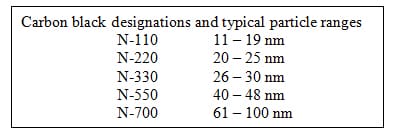
Another aid to achieve superior dispersion is through compounding equipment. Ampacet, for its large production runs of carbon black masterbatch, uses an LCM or long continuous mixer with a long barrel and a specialized screw design. To maintain the tight tolerances necessary for a good dispersion, this line is taken down once a year for maintenance.
The North American industry standard for carbon black loadings is 35% for pressure applications. It is possible to use higher loadings of black pigment, but masterbatches exceeding 40% should be avoided. We have witnessed examples of pipe makers who wanted to save money by ordering the lowest let-down ratio possible, e.g. less than 5% (19:1 ratio), only to find that their pipes failed because they could not effectively mix the masterbatch into their fractional melt HDPE resin.
In general, the higher the loadings of additives, the more the burden falls on a concentrate producer like Ampacet to achieve the best dispersion of additives within the pellets. On the other hand, the responsibility of getting a homogeneous incorporation of masterbatch into the natural HDPE falls mainly on the pipe manufacturer. This assumes, of course, that the two components are compatible to begin with and will melt at about the same temperature profile.
4) Poor Incorporation of Masterbatch Into the Natural Resin During Extrusion.
When it comes to incorporating the masterbatch into the base resin, the importance of the let-down ratio should not be underestimated. Depending on the concentration of ingredients in the masterbatch, a recommended let-down ratio or “mixing ratio” is generally between 5% (19:1) and 6.5% (14:1) for most high performance pipe. Bearing in mind that the strongest pipe is made with only virgin HDPE, the lower the let-down ratio (e.g. 5%), the less the masterbatch will influence the strength of the pipe. Conversely, the higher the let-down ratio (e.g. 8%), the more the masterbatch, and especially its carrier resin, could negatively influence the pipe wall. This is because a higher let-down ratio will bring more of its MLDPE or LLD carrier resin into the matrix.
For colors such as blue or yellow, the let-down ratio is typically lower. Most often, it is in the 2% (49:1) to 4% (24:1) range for pressure pipe, and often less for non-pressure applications such as conduit. (See Part 2 of this article on formulating superior color masterbatches.) The higher the let-down ratio is, the better are the chances that the extruder can incorporate the masterbatch adequately into the polymer matrix. The lower the let-down ratio, the smaller the window becomes to blend the masterbatch into the matrix successfully.
This all assumes, of course, that the machinery used to produce pipe is not antiquated, is well-maintained, and that the back-pressure is sufficient enough to incorporate the masterbatch homogeneously into the let-down resin at temperatures ranging from about 375 F – 450 F. If the pipe extruder is not able to mix the masterbatch effectively into the base resin, the formation of amorphous zones will result, where there is a lack of crystalline structure in the wall. It is in these areas where “ductile failures” can occur. In a ductile failure, extensive deformation takes place until the wall opens up horizontally or diagonally along the length of the plastic pipe. This failure mode is also termed rapid crack propagation (RCP) or is sometimes referred to as a “Stage One” mechanical failure.
Having outlined some of the potential issues that cause pipe weaknesses, it should be noted that pipe failures which are directly attributable to poor quality materials or poor extrusion are not commonly observed. Most premature pipe failures that occur today are traceable instead to improper handling and installation of plastic pipe, or to excessive oxidative degradation of the pipe surfaces.
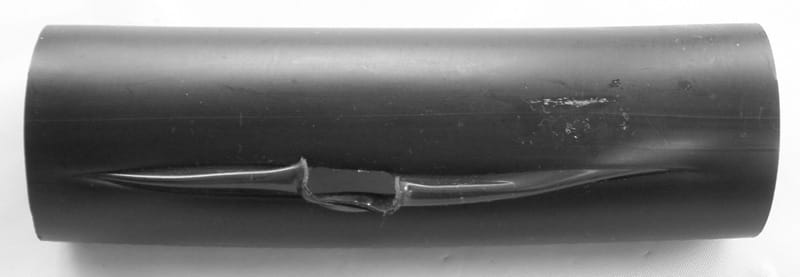 A classic ductile or “Stage One” failure initiated at a weakness in the pipe wall.
A classic ductile or “Stage One” failure initiated at a weakness in the pipe wall.
When filled with pressure at elevated temperatures, deformation takes place until the wall opens up horizontally or diagonally along the length of the pipe.
A Few Words About 4710 / PE 100 Bi-modal Resins
For years, pressure pipe in North America was made solely from unimodal HDPE resins. More recently bi-modal resins, also known as 4710 types or in Europe as PE 100’s, have taken pipe performance to much higher levels. Bi-modal, as the name infers, is basically a combination of two types of PE – a high molecular weight (HMW), and a low molecular weight (LMW). With unimodals, the molecular weight distribution is marked by a bell shaped curve with one peak. The newer technologies for production use either two polymer reactors, or single reactors and specialized catalysts to yield bi-modals with dual peaks, which deliver enhanced physical properties.

It is this blend that gives pipe the strength of HDPE combined with the ease of processing, similar to extruding lower density resins. This makes the PE 4710 bi-modals stiffer and tougher than the unimodals. For example, at 73 F (23 C), they are rated for water service at 1,000 psi. (6.9 MPa) hydrostatic design stress as compared to the old generation PE 3408 types rated at 800 psi (5.5 MPa) HDS for the same service. In comparison to unimodal resins they generally provide these advantages, without sacrificing tensile strength:
- Improved Environmental Stress Crack Resistance (ESCR) and resistance to slow crack growth (SCG)
- Improved resistance to rapid crack propagation (RCP) at low temperatures
- Higher crush strength
- Better abrasion resistance
As a result, pipe makers who have already shifted over to bi-modal resins, no longer have to deal with the complex issues of measuring ESCR and SCG, as these materials have demonstrated extrapolated service lifetimes that are significantly higher than those of the simple unimodal types.
The improvements that bi-modal resins bring, can lead to the pipe’s ability to achieve higher pressure ratings and lengthen its service life considerably. Ultimately, the higher ratings allow water companies to use higher pressures for pipes with identical diameters, or to increase flow capacity for the same pressure rating with thinner walled pipes. It would be a pity to cancel out the added advantages that these resins bring by using an inferior masterbatch with incompatible carrier resins, sub-standard pigments or inorganic fillers which could ultimately contribute to failures in the pipe wall.
Part two of this series will address the formulation of superior color masterbatches for polyolefin pipe.
Ampacet Corporation has prepared this technical paper as a service to readers. The information contained herein is offered in good faith and believed to be accurate at the time of its preparation, but is offered without any warranty, expressed or implied. Additional information may be needed in some areas, especially with regard to unusual or special applications. For additional information, please contact Ampacet Corporation.
[1] ASTM D 3849 – 07 Standard Test Method for Carbon Black-Morphological Characterization of Carbon Black Using Electron Microscopy.
[2] High Performance PE Materials for Water Piping Applications. Plastics Pipe Institute Technical Note TN-41 / 2007. Plastics Pipe Institute. Irving, Texas, 2007.

